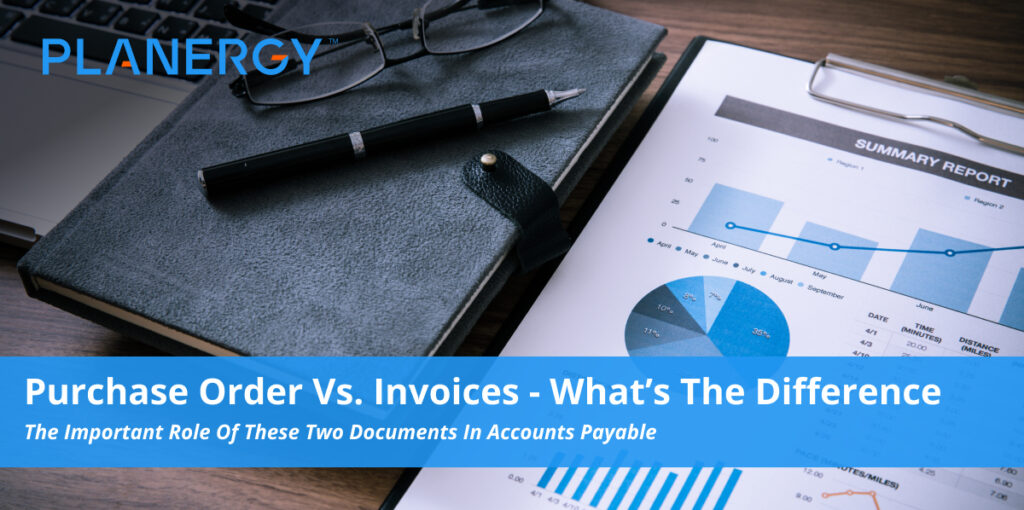Purchase orders and invoices are documents that nearly every finance department deals with on a daily basis. So, what are these two documents, and why are they such an important part of the procurement process?
What Is a Purchase Order?
A purchase order (PO) is a legal document that officially confirms an order. It’s sent from a purchaser to a vendor to authorize a purchase. A PO contains all the information the vendor needs to fulfill the order, including the product or service, description, quantity, and delivery information.
It also contains the payment terms for the purchase, such as ‘ net 30’, which means that the buyer will pay the seller within 30 days of delivery. Because a purchase order is legally binding, vendors are able to fulfill orders before they receive payment. It is essentially a legal guarantee that they will be paid.
A purchase order looks like this:
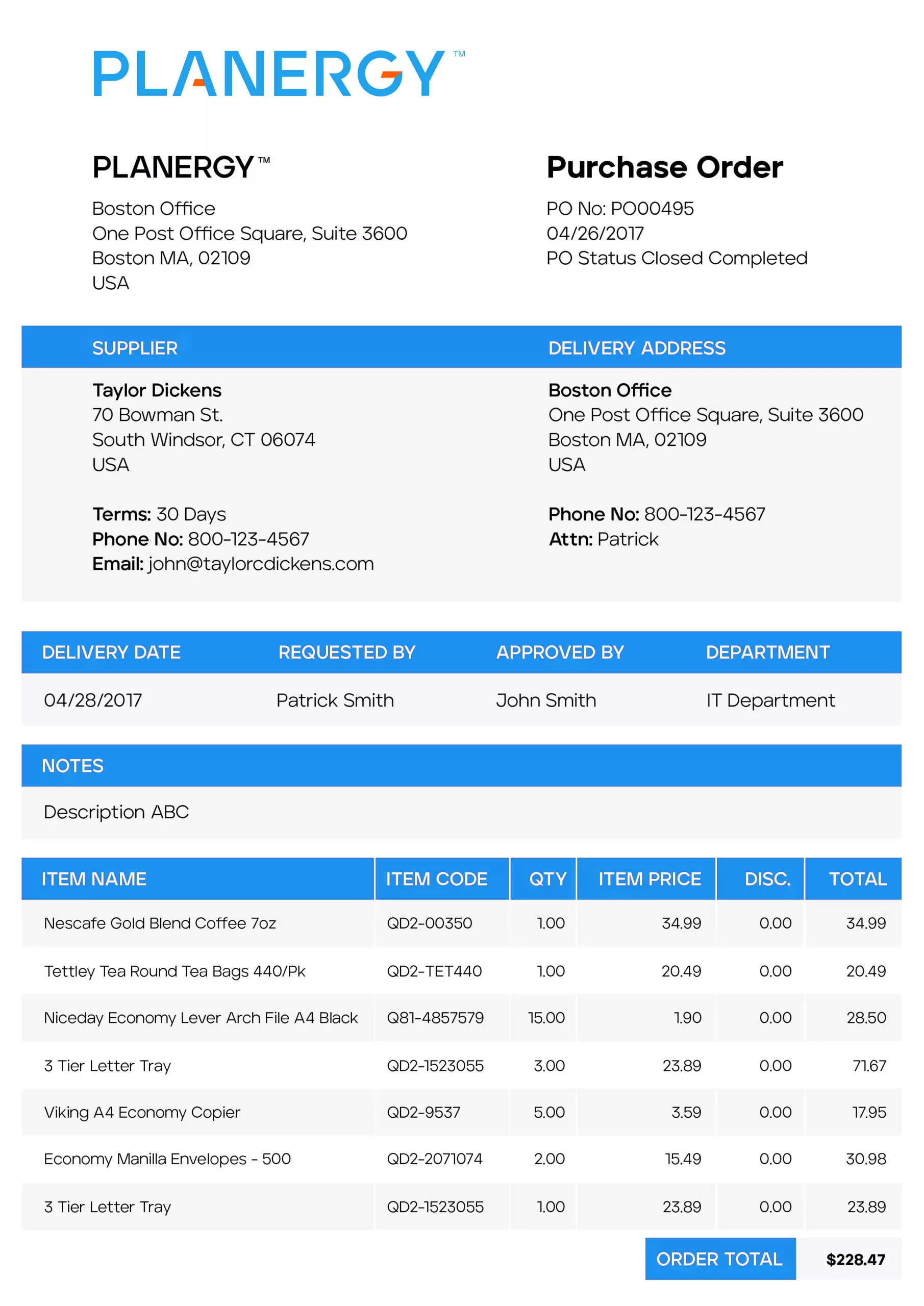
The standard format for a purchase order will usually include a number of sections:
- Header
- Supplier information
- Delivery information
- Item information
- Order total
- Terms and conditions
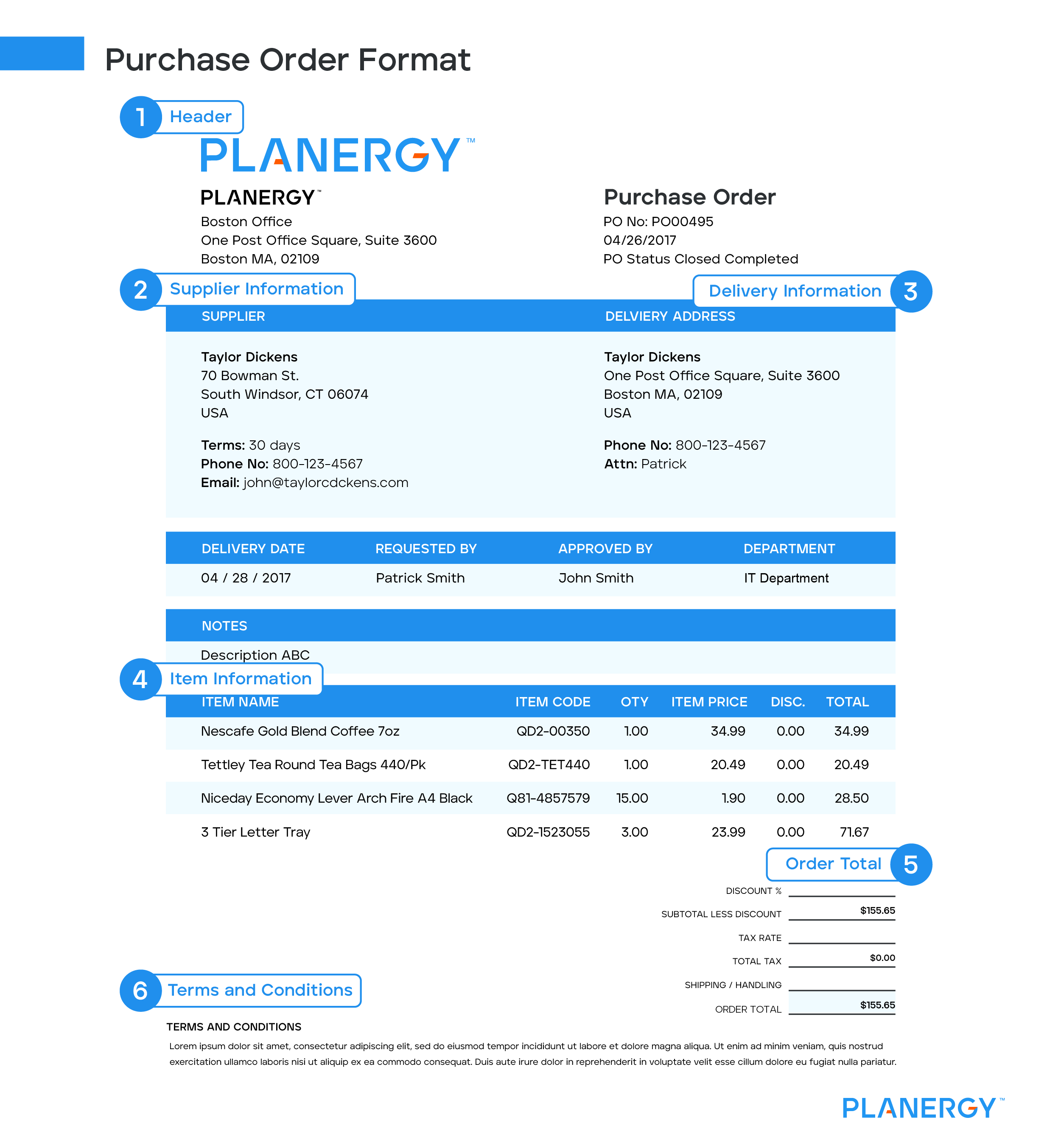
What Are the Benefits of Using Purchase Orders?
Purchase orders are the standard for almost all businesses-to-business purchases because of the benefits they provide for procurement and accounts payable teams. Some of those benefits include:
- Improved financial accuracy and record keeping
- The ability to ensure payments match orders through 2-way matching and 3-way matching
- A legal basis for clear payment and delivery terms
- Increased ability to control budgets as orders must go through a purchase requisition process and funds must be allocated to specific POs
What Is an Invoice?
An invoice is a document that requests payment for a purchase made through a purchase order. It’s sent from the vendor that the buyer sent a PO to, and should match the details on the PO such as quantity, price, and totals. The invoice should also display the PO number from the order it’s for.
In some cases, invoices can be sent without a purchase order. This may happen when an order is placed with a credit card over over the phone or through an eCommerce website. This is more common for small purchases or even for consumer payments. However, for most business-to-business purchases, a PO precedes the invoice.
Invoices should match the payment terms that the vendor agreed to. For example, if the buyer request 30 days for their payment terms, the invoice should state that the payment due date is in 30 days.
It also must include an accurate billing address and contact information, and any other information that the buyer needs to complete the payment. For example, if the vendor would like a check, it should specify who to make it out to. If they want a wire transfer, the account and routing numbers should be on the invoice.
An invoice could look like this:
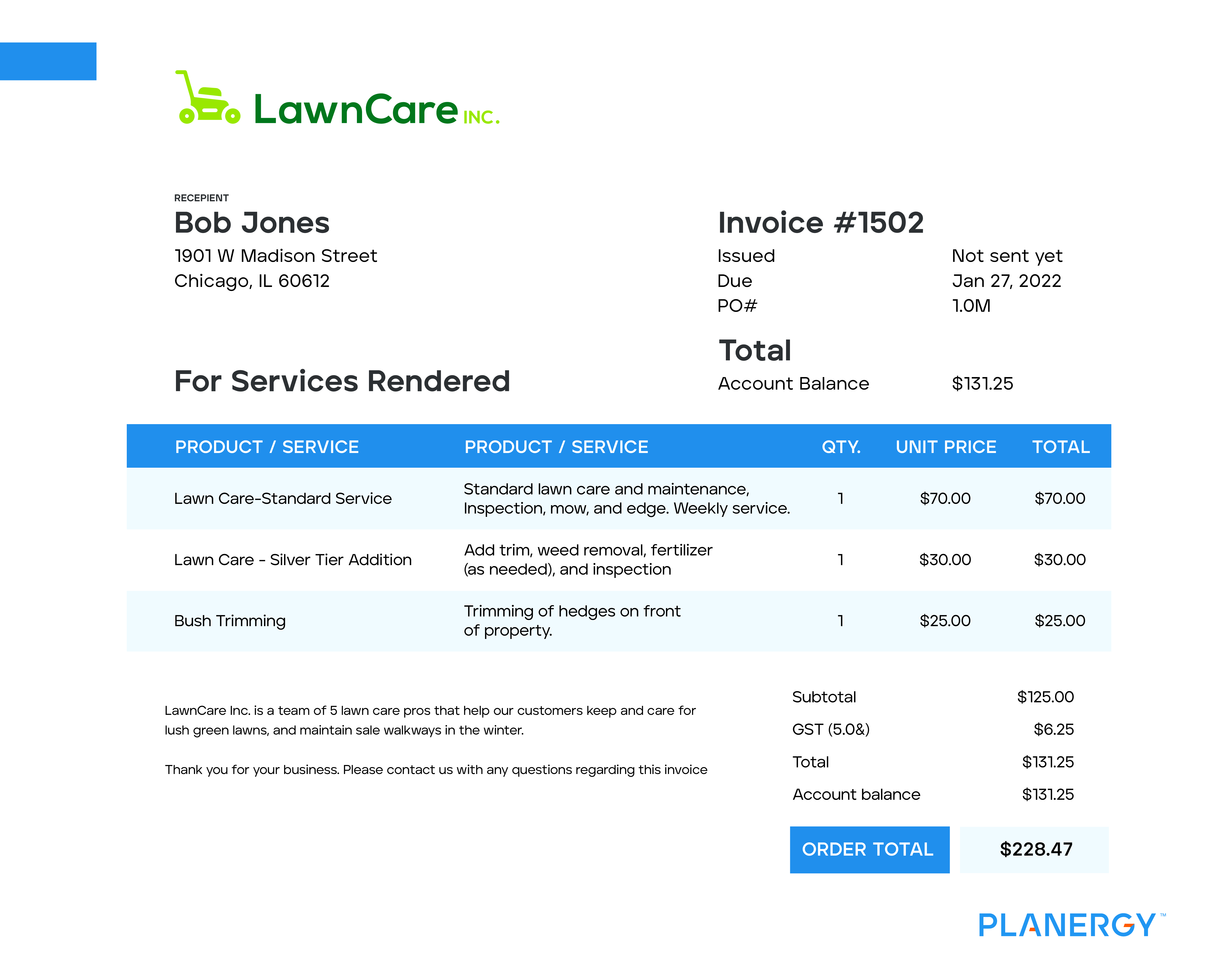
What Are the Benefits of Using Invoices?
Just like purchase orders, invoices are the industry standard for accepting business-to-business payment requests because of the many benefits they provide. When a buyer sends a purchase order, an invoice is almost always what the vendor sends for payment.
Other than being the industry standard, the benefits of using an invoice include:
- An easy way to track expected payments and cash flow
- A paper trail that proves payment was requested
- Increased billing accuracy and clear terms for payments
- A faster way to get paid when paired with an eProcurement system like PLANERGY
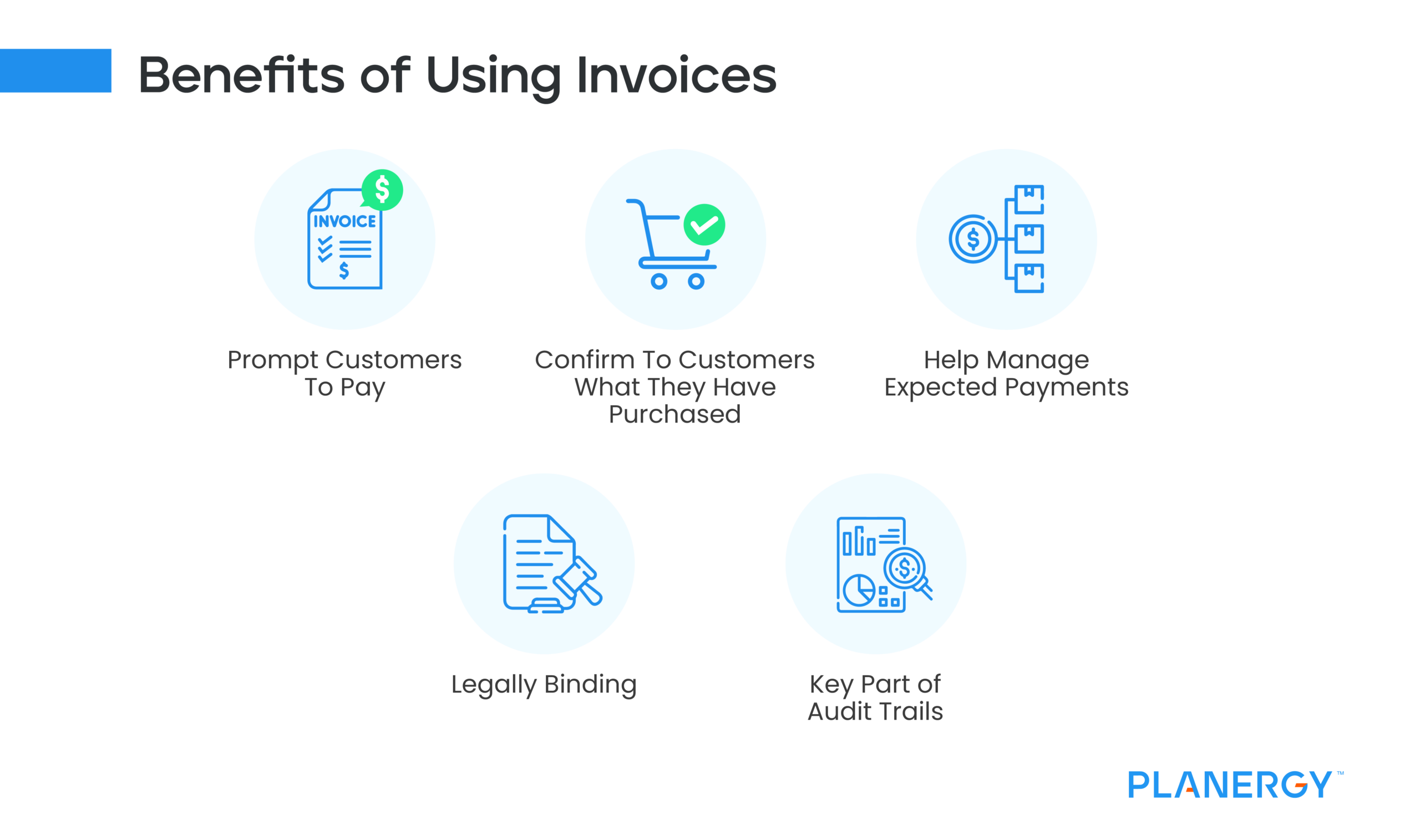
What Is the Difference Between a Purchase Order and an Invoice?
The difference between a purchase order and an invoice is that a purchase order confirms that an order has been placed while an invoice requests payment for an order. A purchase order comes before the invoice, and the invoice is the supplier’s response to the purchase order—along with the goods and services delivered.
Differences Between Purchase Orders and Invoices
| Document | Purchase Order | Invoice |
|---|---|---|
| What it is | Official confirmation of an order | Request for payment for an order |
| Who receives it | Vendor | Purchaser |
| When it is sent | Before the order is fulfilled | After the order is fulfilled |
| What it contains |
| Same information as on purchase order, plus:
Total amount due |
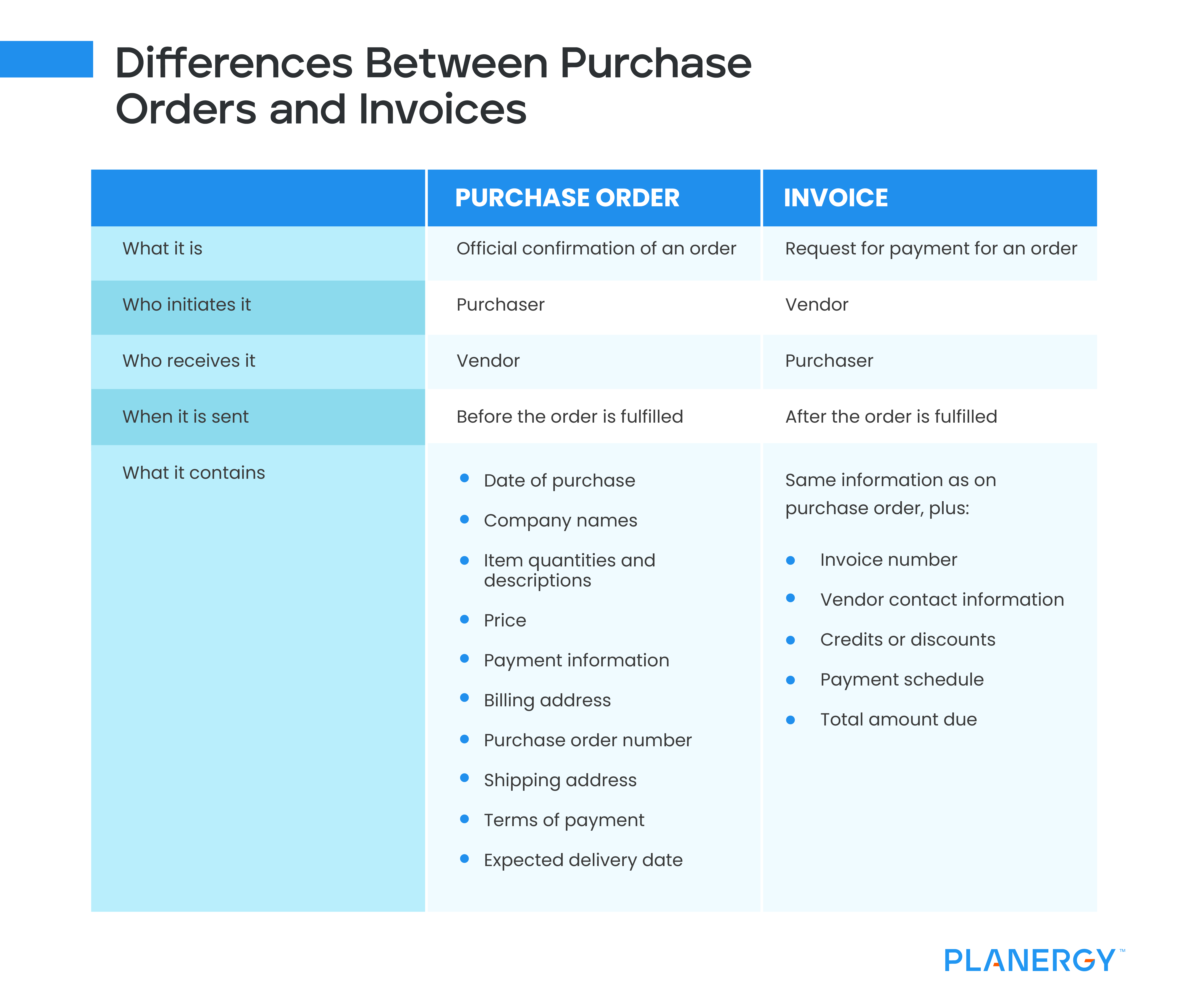
What Is Similar About a Purchase Order and an Invoice?
Purchase orders and invoices share key similarities. Both documents are legally binding contracts that represent an agreement between the purchaser and the vendor, and the actions they contain are required.
In addition, they contain much of the same information, including order details, mailing information, quantity of goods or services, PO number, and pricing. In fact, the invoice generally contains all of the information from the PO, then adds the invoice number and payment information on top of that.
Purchase orders and invoices contain much of the same information but are used for very different purposes. Purchase orders request goods and services. Invoices request payment for goods and services.
Why Do Companies Use Purchase Orders?
Whether for a small business or large organization with a robust purchasing department, purchase order management is used for several reasons:
They Set Clear Expectations
POs enable purchasers to clarify their needs to vendors. Both parties can use refer to them if orders aren’t delivered as expected.
They Help Manage Orders
POs give procurement, finance, and operations teams official documentation of incoming or pending deliveries—enabling them to track and manage orders more effectively.
They Help With Budgeting
Once a PO is created, purchasers can factor these costs into company budgets and spend according to plan.
They are Legally Binding
A PO serves as a legally binding document, but only after it is accepted by the vendor. This gives the purchaser legal assurance that they’ll receive their order and the vendor legal assurance that they’ll be paid for it.
They are a Key Part of Audit Trails
Recording POs helps provide auditors with the details they’re looking for and ensures that there aren’t any financial discrepancies in the purchasing department.
The benefits above are geared toward purchasers, but POs are also important documents for vendors—who use them for order fulfillment and payment processing.
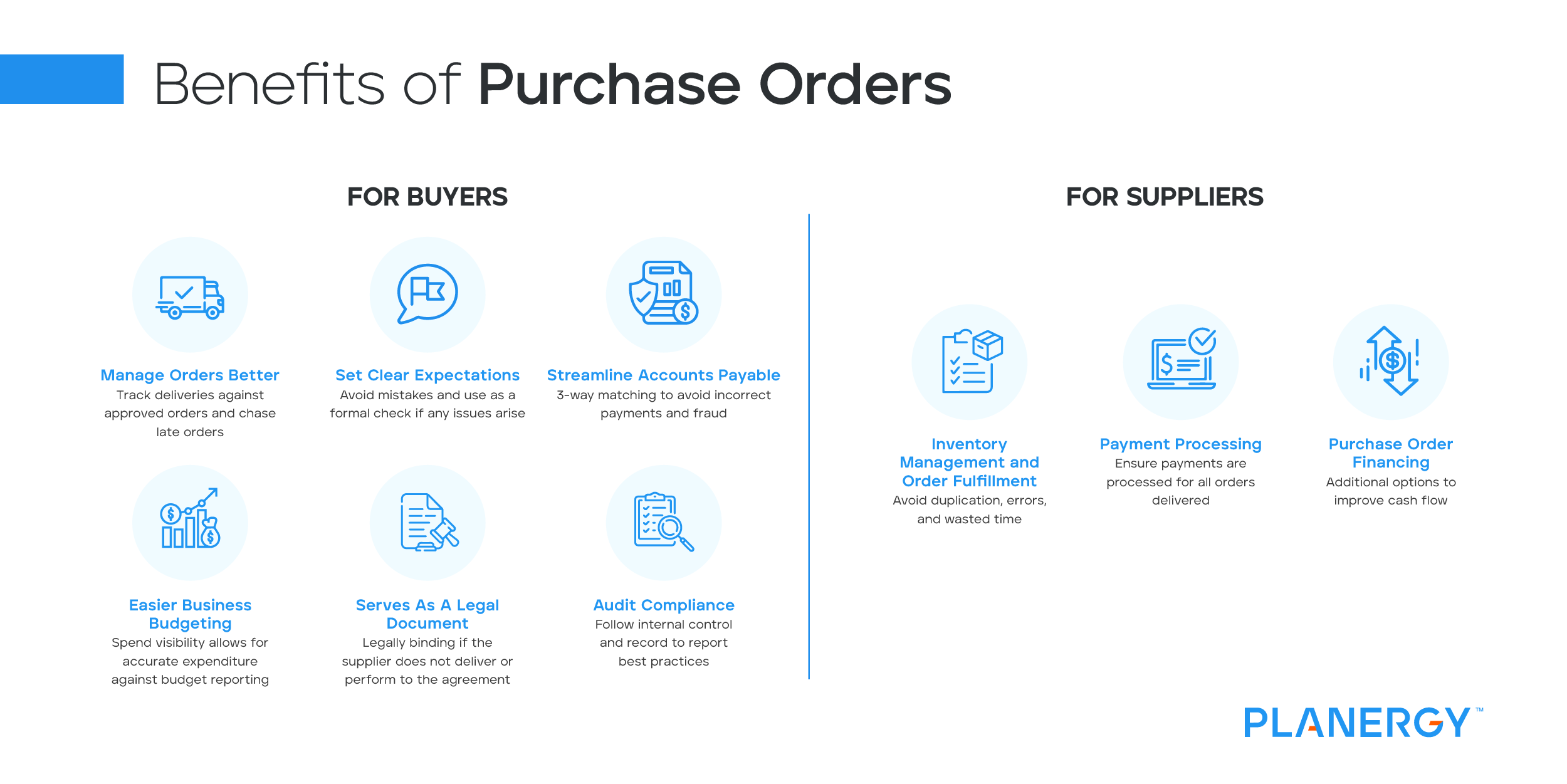
Purchase order software can provide these benefits and more, as it digitizes and automates the entire procure-to-pay process from purchase order to invoice.
Why Do Companies Use Invoices?
As mentioned earlier, invoices are the standard for requesting business-to-business payments, which is the main reason companies use them. But they are the industry standard for good reasons.
Companies use invoices because:
They Prompt Customers To Pay
Most vendors don’t receive payment until after an invoice is sent to the purchaser. A phone call or email from their accounts receivable department won’t suffice to complete the business transaction.
They Provide Confirmation To Customers On What They Have Purchased
Invoices describe exactly what you’re getting for your money in line by line detail, which gives accounting departments transparency into what different departments buy—along with projections for cash flow.
They Help Manage Payments
Invoices show what goods or services were sold, how much money has been paid to date, and any outstanding charges—providing a formal way to manage business payments.
They are Legally Binding
A sales invoice officially shows that goods or services were provided and when payment is expected. They show financial terms that must be adhered to—providing legal proof that payment is due and can be referred to if payment isn’t received.
They are a Key Part of Audit Trails
Auditors require evidence of all money going in and out of businesses. Since invoices show exactly what a business charges its customers, they are a crucial part of this evidence.
The Benefits of Digital Purchase Orders and Invoices
For a small business owner, using purchase order and invoice templates with programs like Word or Excel may work temporarily, but as the company grows it can become overly time-consuming and hard to manage. Additionally, printing and mailing paper can be hard to manage while ensuring that nothing gets lost or destroyed.
Digital procurement software provides many benefits to the purchase order and invoicing process. It gives companies the ability to control their budgets, improve vendor sourcing practices, manage relationships with suppliers, and ensure that they both pay invoices on time and get paid through invoices on time.
As a company scales and grows, it makes sense to switch to add automation and pursue a policy of digital transformation in procurement—as finance teams will need to manage a more complex procure-to-pay process and ensure that they are getting the most value from their supply chain. The best way to achieve this is through digital procurement software.
Purchase Orders and Invoices Are Vital to Success
Invoices and purchase orders are a vital part of a company’s purchasing process. Understanding the roles that invoices and purchase orders play is important for anyone involved in purchasing goods or services on behalf of an organization.

